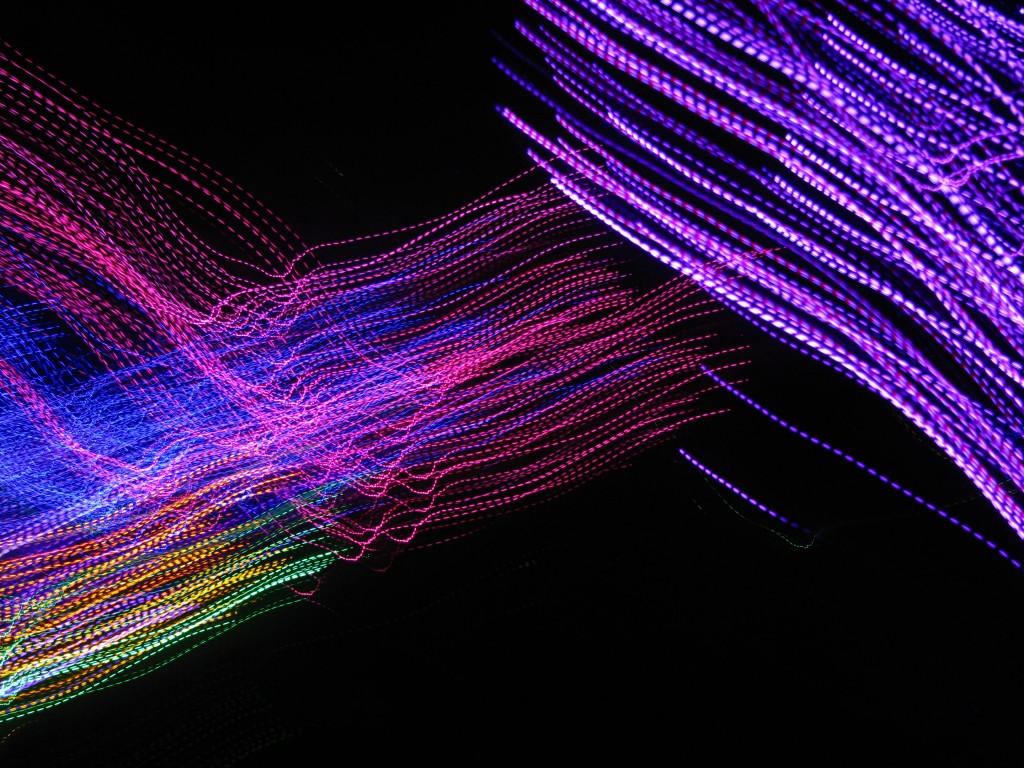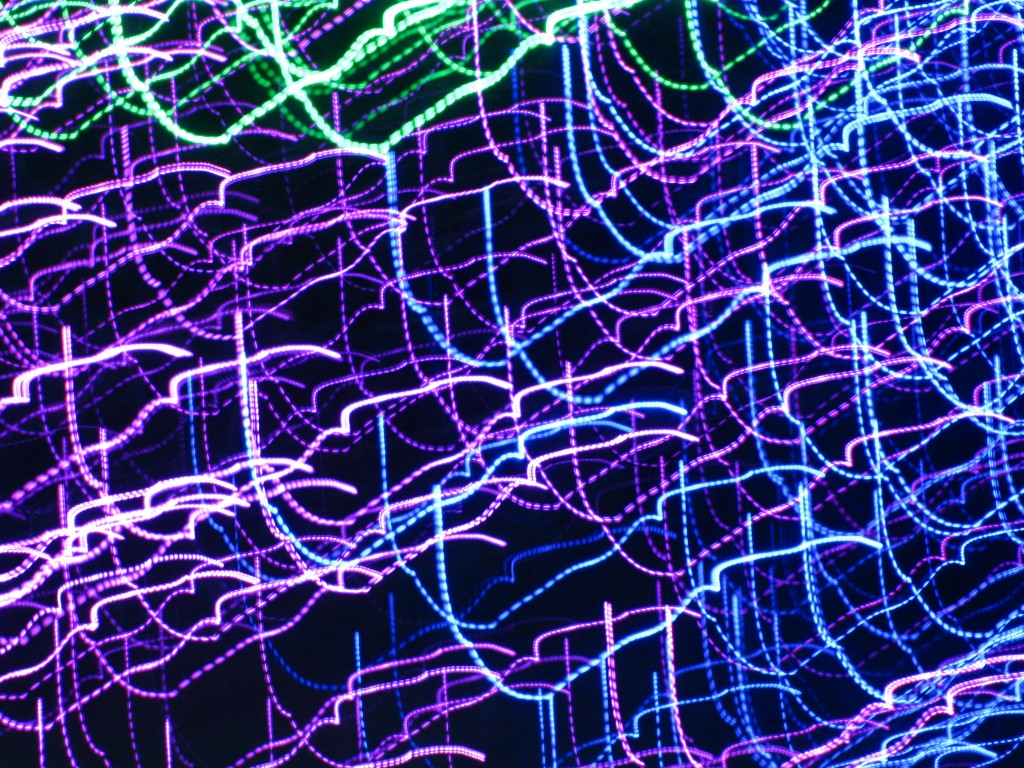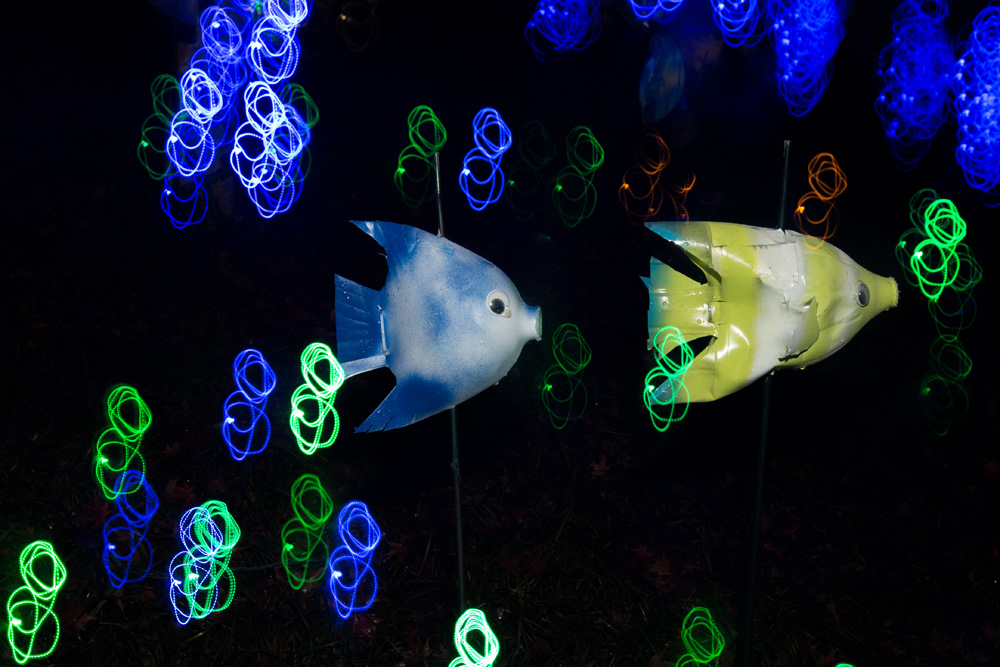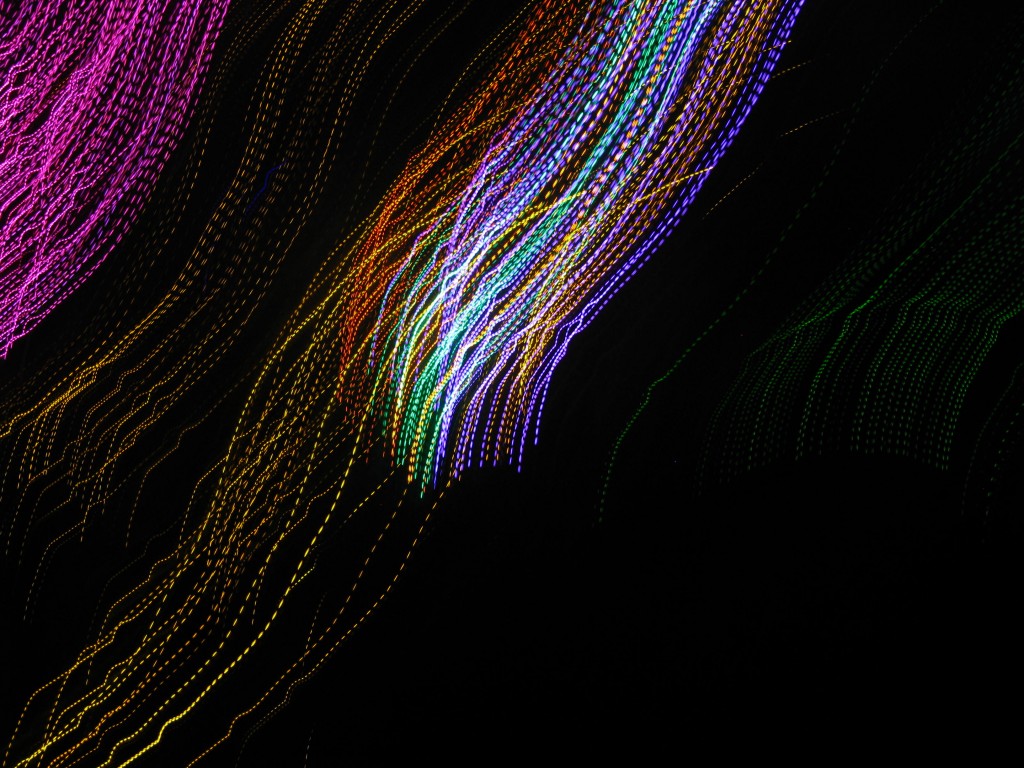Nighttime Light Painting
When my coworker, horticulturist Laurie McMinn, came up to me raving about a “Light Painting class” she took here at the Garden, at first I thought she was talking about an art class with paintbrushes and paint, exploring the subject of light. Then, she pulled out her camera and showed me this:
I was blown away. I couldn’t believe how creative and whimsical the art form was and that it was all done with digital single lens reflex (DSLR) camera by simply moving or spinning while you take the shot and adjusting the shutter speed timing and exposure. McMinn said to make your photos even more interesting you could use water reflections or other tools like filters. I was wishing that I’d signed up for the class! How awesome to be able to get a sneak peek of Dominion Energy GardenFest of Lights with your camera, escorted by nationally acclaimed photographer Lynda Richardson as you teacher. Apparently, I’m not the only one who thought this, our first class sold out almost immediately and we added a second section of the class, which was also filled almost immediately with those from the waiting list for the first class.
After a quick lecture by Richardson, giving examples and discussing techniques and tips it was out into the Garden for some photography fun!
McMinn, who brought a simple a simple point-and-shoot camera, explained, “Light painting was more exciting and creative then what I thought it would be.” McMinn said she was especially impressed by one of her classmates, Kristen Grainer, who is a professional photographer and captured a photo where the lights look like little fish swimming in a school — a perfect tie-in to this year’s H2Whoa! GardenFest theme.
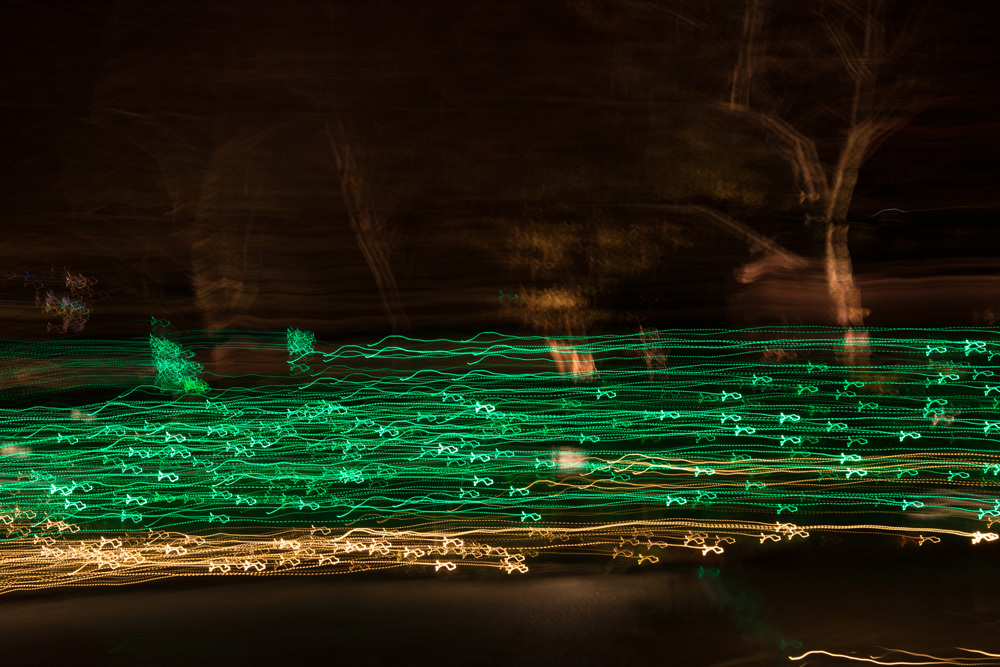
With H2Whoa! and water as the theme for this year’s Dominion GardenFest of Lights, we immediately fell in love with this photo of what looks like a school of fish swimming down the path at the Garden, taken by Kristen Grainer.
Grainer also took a pretty neat photo of our “bottle fish” swimming in abstract lights. She used a flash to make the fish “pop” out of the dark.
Grainer says, “I took the Light Drawing class mainly because I really wanted to challenge myself with my photography this year. I’m in the middle of a project where I take a picture every day for a whole year, so it’s always nice when I can learn something new to show off for the daily photo. I didn’t realize how much fun I was going to have at the class. It was very interactive and everyone was bouncing ideas off each other. It was a great opportunity and venue to learn a new technique.”
Sounds like fun, right? This class was so popular, we’ll offer it again next year. If you can’t wait until then, you are welcome bring your digital camera when you come to this year’s GardenFest of Lights. Just be sure to bring a camera where you can adjust ISO, shutter speed, and apertures. You won’t need a tripod, either, just have some fun and experiment — see what fun shapes and patterns you get.
Here are a few tips for light painting from Lynda Richardson:
1) Use a camera where you can manually change the ISO, shutter speed and aperture.
2) Set your ISO to 100, your aperture to f/11.0 or f/16, and now for the tricky part, your shutter speed to 4″, 5″ or 6″ seconds to start. (HINT: Make sure you are NOT using 1/4th of a second. It should take a count of 4 seconds for the exposure and will appear too dark if you set it wrong). If your camera only has an aperture of f/8.0, you will have to use a shorter shutter speed like 1 or 2 seconds which can be limiting but you can still get good images.
3) If you find that you have the correct exposures but they are coming out too dark or too light, just change your exposure time. For example: Longer time is 5 seconds instead of 4 seconds. Shorter time would be 3 seconds instead of 4. I have taken images at 20 or more seconds.
4) You do not need a tripod for this. Click the shutter and experiment with twirling, making circles and squares, spelling your name, making waves and so forth. This should get you started for an enjoyable evening of light painting in the Garden.
